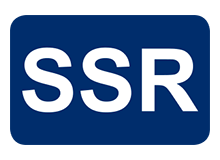How do I configure the PCRP Simulator?
There are all-encompassing configuration manuals provided by BCG which are posted on SSR’s website. This information should be considered a quick guide on how to get the system running. Please refer to the manual for further instructions.
There are two typical configurations:
- Standalone
A single PCRP Simulator is put on the network and its output is controlled by the local BCG GUI Application. If there are multiple Simulators on the network each one will be running an independent scenario. If there are overlapping coverage areas, targets detected on one Simulator will not be detected by the other Simulator.
- Master / Slave
There are multiple PCRP Simulators on the network and the outputs are controlled by a single Master BCG GUI Application. There will be a common scenario running on the Master BCG GUI Application and it will provide each PCRP Simulator with the surveillance data. It is possible for two radars in overlapping coverage to detect the same target.
Standalone
In Standalone configurations the two files that will need to be modified are gui.ini and pcsvms.bat; both can be found under C:GUI. The following excerpts call out the line items in the configuration files that need to be touched.
gui.ini
[Config]Ownships=1 (Only 1 Ownship in Standalone Mode)
Targets=20 (Max number of targets that can be defined)
Problems=1
[INS]LOCAL_ADDRESS=192.168.100.1
LOCAL_BROADCAST=192.168.100.255
LOCAL_NETMASK=255.255.255.0
(Same information as assigned in Windows, defined by network)
pcsvms.bat
rpman.exe –U xx –F –N
(xx Indicates the Unique RP Unit Number 1-64 with no duplicates, add the –F and –N to force the PCRP Simulator not to start the Tracker and Navigation Tasks, respectively)
Note: REM at the beginning of a line makes the line a comment. You can comment out the tracker and navigation process by putting an REM in front.
Master/Slave
In Master / Slave configurations the two files that will need to be modified are gui.ini and pcsvms.bat both can be found under C:GUI. The following excerpts call out the line items.
gui.ini (For Master Simulator)
[MRS]OS1=BCGMSG_ETHER/192.168.100.1/5010,5011
OS2=BCGMSG_ETHER/192.168.100.2/5020,5021
(Each Ownship (aka PC-RP Simulator) needs to have a OSx line item specified with its IP Address; the first UDP Port number is the send to port and the second port number is the receive from port. These can be specified by the user but the above example provides a good allocation method.)
[Config]Ownships=x (Number of PCRP Simulators Master+Slaves)
Targets=20 (Max number of targets that can be defined)
Problems=1
[INS]LOCAL_ADDRESS=192.168.100.1
LOCAL_BROADCAST=192.168.100.255
LOCAL_NETMASK=255.255.255.0
(Same information as assigned in Windows, defined by network)
[SimConfig]UDPPortNumber=5010
(This port number needs to match the first port defined in the ‘OSx’ line associated with this IP Address. Typically the Master is OS1.)
pcsvms.bat (For Master Simulator)
start “RPMAN” /B rpman.exe –U xx –F –N
(xx Indicates the Unique RP Unit Number 1-64 with no duplicates, add the –F and –N to force the PCRP Simulator not to start the Tracker and Navigation Task)
Note: REM at the beginning of a line makes the line a comment. You can comment out the tracker and navigation process by putting an REM in front.
gui.ini (For Slave Simulator)
[INS]LOCAL_ADDRESS=192.168.100.2
LOCAL_BROADCAST=192.168.100.255
LOCAL_NETMASK=255.255.255.0
(Same information as assigned in Windows, defined by network)
[SimConfig]UDPPortNumber=5020
(This port number needs to match the first port defined in the ‘OSx’ line associated with this IP Address)
pcsvms.bat (For Slave Simulator)
REM start bcggui2.exe
start “RPMAN” /B rpman.exe –U xx –F –N
(xx Indicates the Unique RP Unit Number 1-64 with no duplicates, add the –F and –N to force the PCRP Simulator not to start the Tracker and Navigation Task)
Note: REM at the beginning of a line makes the line a comment. You can comment out the tracker and navigation process by putting an REM in front. The bcggui2.exe program does not need to run on Slave PCRP Simulators.
